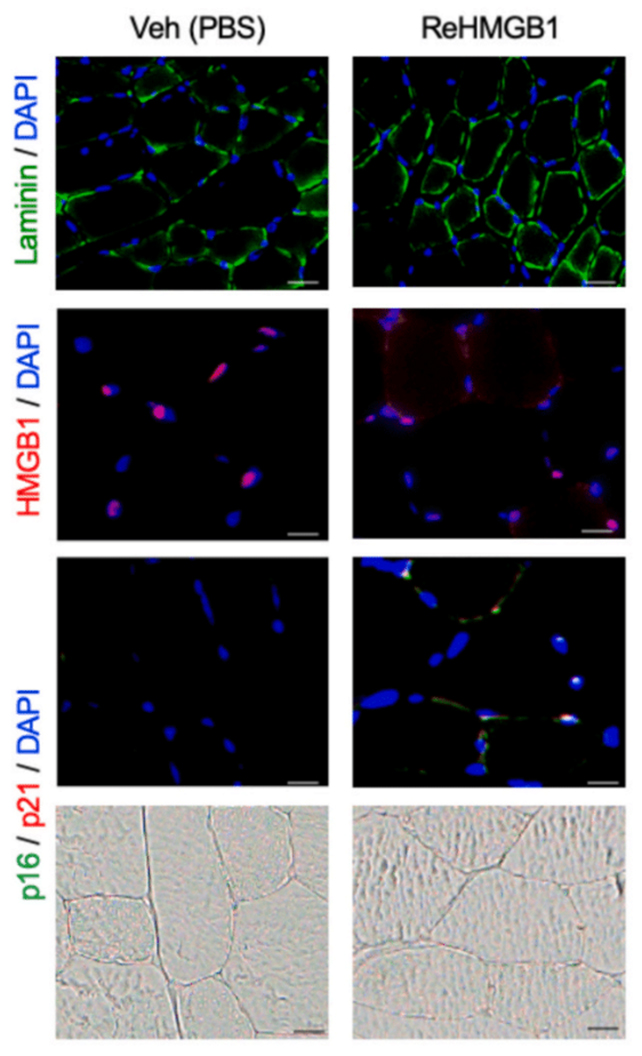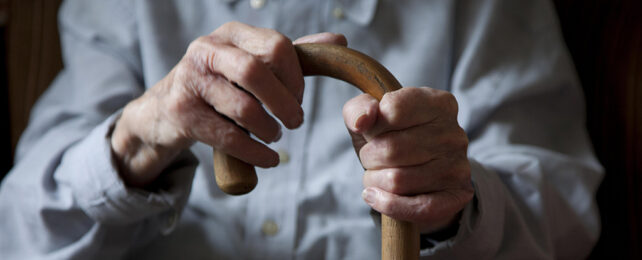Take note of the name: ReHMGB1. A new study pinpoints this protein as being able to spread the wear and tear that comes with time as it quietly travels through the bloodstream. This adds significantly to our understanding of aging.
Short for reduced high mobility group box 1, ReHMGB1 triggers senescence in cells, permanently disabling them. It doesn't just do this locally; it can send damaging signals throughout the body, particularly in response to injuries or disease.
"An important question in aging research is why senescent cells increase with age," write the study authors, led by researchers from the Korea University College of Medicine.
Related: Scientists Identify How Young Blood Reverses Aging in Human Skin Cells
The team says their findings could help develop ways to keep us healthier for longer. If we can block or control this protein's signals, it might slow the cascade of cellular decline that comes with age.

"This study reveals that aging signals are not confined to individual cells but can be systemically transmitted via the blood, with ReHMGB1 acting as a key driver," says Korea University biomedical engineer Ok Hee Jeon.
The researchers were able to identify ReHMGB1 as a critical messenger passing on the senescence signal by analyzing different types of human cells grown in the lab and conducting a variety of tests on mice.
When ReHMGB1 transmission was blocked in mice with muscle injuries, muscle regeneration happened more quickly, while the animals showed improved physical performance, fewer signs of cellular aging, and reduced systemic inflammation.
The next step would be to see how this process could be disrupted, and this particular type of aging signal kept more localized – so the health conditions that come with old age might not be as damaging.
"By blocking this pathway, we were able to restore tissue regenerative capacity, suggesting a promising strategy to treat aging-related diseases," says Jeon.
This process is only one contributor to aging out of many, but the signals that ReHMGB1 spreads are particularly important in terms of our bodies becoming dysfunctional over time and less able to carry out repairs.

It's also worth bearing in mind the useful functions of ReHMGB1 in the body: alerting our biological systems to damage and indicating that repairs are needed. Any kind of intervention will have to take that into consideration.
We know that, generally speaking, populations are living for longer than ever before, and that's putting both our bodies and scientific research into uncharted territory. The various routines built into our cells must continue to function when years ago our bodies would have long given up.
Related: This Common Blood Pressure Drug Extends Lifespan, Slows Aging in Animals
From where we live to the genetics we're born with, there are many contributors to aging and lifespan. By learning more about how these work, we'll be better able to manage them – and perhaps extend life further.
"Building on current research in these areas will be essential to understanding the therapeutic potential of redox-sensitive HMGB1 in aging-related diseases and its role as a systemic mediator of senescence," write the researchers in their published paper.
The research has been published in Metabolism.
